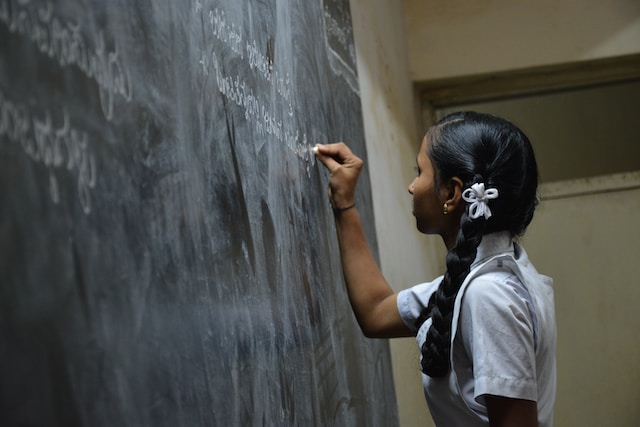Belize, like other postwar British colonies, has enthusiastically adopted the rhetoric and practices associated with development of classes and consumerism, as well as experiencing profound social transformations.
Education and employment opportunities now transcend ethnic lines. Emigration and immigration have contributed to an emerging sense of Central American identity. Furthermore, inheritance laws give priority to legal spouses and children when allocating inheritance rights.
The Elite
Few elite families dominated Belize’s financial, commercial, and industrial sectors. They controlled most of its land through leasehold arrangements or ownership and dominated its sugar export industry. While most indigenous Maya populations resembled indigenous Creoles of light skin color with Protestant or Roman Catholic leanings; most families belonging to these elite families were white or light-skinned Creoles who often practiced both religions. Their influence extended from social to cultural ideas that helped differentiate themselves from the general population; such as an emphasis on education, cultural respectability brought by Protestant ethics as well as upward social mobility.
Ethnicity and religion remained key factors in class differentiation; however, political affiliation transcended these barriers. For instance, during the 1950s nationalist movement attracted many Creole middle-class leaders who supported its anti-British and pro-Central American ideology, while most middle-class households did not endorse its anti-Catholic and multicultural rhetoric.
In the 1980s, economic interests and lifestyle largely determined class identity for middle-sector Belizeans. Most worked in public service or small business while a few also exported agricultural commodities privately. They frequently attended church services, social clubs, or recreational activities that highlighted middle-class sensibility.
Middle-sector educational aspirations were driven by the high wages that can be earned with a secondary or college education, including doubled wages for workers with a diploma, while advanced degrees can result in three times more pay. Unfortunately, only wealthy households could afford to send their children to the University of Belize, whose tuition alone costs approximately $1500 annually.
Even with their educational achievements, many middle-class Belizeans struggled to secure employment outside the village. Farmers found it particularly hard to qualify for loans or lease agreements from banks or private leasing companies and sold their land instead to foreign firms that controlled most sugar plantation operations and tourist facilities in Belize.
Inheritance policies were another source of contention among Belizean middle-class families. Traditional inheritance laws gave legal spouses and surviving children precedence over extended family members; however, most households did not find it necessary to abide by these rules due to rising property values.
The Middle Class
Belize’s middle class can be identified by its large proportion of educated people and its dependence on private investment. This group represents approximately one-third of Belize’s workforce and most members work in service industries like education, health care and commerce; they also account for a considerable share of capital investment into Belize.
In the 1950s and 1960s, middle-class support of nationalist movements dominated. This movement promoted an idea of Caribbean nationhood while challenging British influence through multiculturalism ethos; its ideology appealed to all ethnicities regardless of class status.
As Belize’s middle class became more interested in maintaining their social standing than increasing economic mobility, many left Belize for better economic prospects in the US. Many migrants established themselves there as professionals, tradesmen, or businesspeople – something few could say for Belizean middle-class migrants.
Today, Belize has evolved into a service economy, with a growing manufacturing sector and a small agricultural base. Timber logging once comprised the bulk of Belize’s economy; since the 1990s however, services have taken over as the dominant industry and now account for almost 50% of GDP. Sugar and citrus fruit crops remain important components of agriculture which remain vulnerable to price fluctuations on global markets.
Due to Belize’s lack of an industrial base, most middle-class employment can be found in the service sector. Salaries tend to be higher among these people compared with lower classes; however, even so, most individuals in this group still do not earn enough for a comfortable standard of living in Belize.
Belize’s development is being held back by high debt levels and insufficient foreign investments. While Belize welcomes investments from outsiders, bureaucratic delays, insufficient infrastructure and other obstacles make taking risks difficult for investors.
The Working Class
In Belize’s middle sector in the 1980s, families may not have had the financial assets and social status enjoyed by Belize’s elite families, but they fared much better than those living in poverty. Many had both traditional family businesses as well as modern jobs. These middle sector occupations included small-business proprietors, professionals, teachers, and mid-level civil servants; skilled tradespeople; commercial employees as well as agricultural land and agribusinesses owned. It was culturally diverse as its membership included members from across Belizean ethnic groups. Histories suggest a correlation between occupation and ethnicity; Creoles are most likely to work in professions, agriculture, and government employment while Garifuna are likely to specialize in small business, farming, and skilled trades.
Although the Belizean middle class has undergone tremendous social transformation, many members still remain economically vulnerable; consequently, Belizean society still experiences an income disparity and high level of inequality.
Access to education is key to combatting inequality; those without this access tend to remain in lower classes of society. A high school diploma, vocational training, or university enrollment could potentially double an employee’s wage in Belize while vocational courses offer a threefold increase and university enrolment up to five-fold increase respectively; unfortunately, most Belizeans don’t receive access to necessary educational opportunities (Naslund-Hadley, Navarro-Palau & Prada 2020).
Belize faces numerous economic hurdles, not the least among them being an increasing income gap between elite and working classes. Furthermore, high crime levels may impede tourism – an essential contributor to its economy. Debt and trade imbalances continue to plague Belize’s economy, yet the government remains committed to alleviating poverty and inequality between classes. Implementation of these policies is expected to help create a more sustainable future for Belize. At present, most revenue for the country comes from external sources – which could pose risks if its economic development is negatively impacted by relations with other countries, leading to high unemployment levels.
The Poor
Belize’s poor comprise a significant portion of its population. Most vulnerable are urban residents with limited economic opportunity and employment in the informal sector (usually “ketch and kill jobs”) as temporary unskilled labor; many may also engage in drug trafficking and gang activities while having restricted access to social services, all contributing factors towards high levels of poverty and inequality in Belize.
These factors are further compounded by the fact that many families lack the stability and resources of middle classes, making it harder for them to provide adequate nutrition and educational opportunities for their children. Furthermore, single parent households and those led by a female household often face additional difficulties; single-parent and female-led homes tend to lack men who provide emotional support that contribute to positive child development.
Urban poor Belizeans experience further division between classes due to the divisive influence of religion and politics. Religious and political affiliations are determined by a sense of social belonging and an attachment to Belize, both which serve to maintain their socioeconomic standing while creating barriers between various segments of society.
Rural communities may exhibit more marked class processes. With global capitalism spreading ever further into local agrarian economies, proletarianization rates vary between them and has caused subsistence agriculture to become less viable, inequality between households and genders to worsen, land rights conflicts to escalate further, education system mediation becoming less effective and the development of hierarchies of labour power being hindered by these developments.
Belizean dynamics manifest themselves through a range of social issues, from poverty to violence. Addressing them will require taking an holistic approach to development that increases job opportunities while encouraging entrepreneurialism across all sectors of the economy. In addition, more effective social services must also be made available specifically for poor people – the ultimate aim being addressing inequality at its roots.




